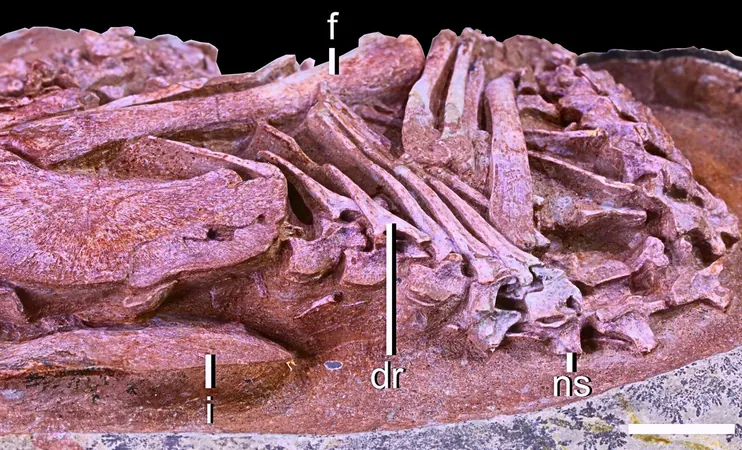
Groundbreaking Discovery: Ancient Dinosaur Embryo Unveils Surprising Insights into Bird Behavior
2025-01-17
Author: Ying
A Remarkable Fossil Revelation
Encased within an elongatoolithid egg, Baby Yingliang boasts a distinctive posture that is strikingly similar to that of late-stage bird embryos. Notable features include the head oriented beneath the body and the feet symmetrically placed on either side, with the back curled toward the blunt end of the egg. This posture closely resembles the tucking behavior essential for birds during hatching—a critical adaptation that ensures successful emergence from the egg.
The Significance of Tucking Behavior
Tucking is not just a simple movement; it is a nuanced behavior governed by the central nervous system. In modern birds, mastering this posture is crucial for breaking through the shell. Without it, embryos face a grim fate, often not making it through the hatching process. The discovery of Baby Yingliang's similar tucking posture provides groundbreaking evidence that such behaviors could have originated much earlier in the evolutionary timeline, emerging within non-avian theropods like oviraptorids before being inherited by their avian descendants.
Implications for Evolutionary Biology
This remarkable find challenges the longstanding notion that certain bird-like behaviors are unique to avian evolution. Researchers suggest that tucking, previously thought exclusive to birds, may have ancient roots deeply embedded in the behaviors of theropods. By comparing Baby Yingliang with other known oviraptorid embryos, scientists identified behavioral patterns indicating that these avian-like postures might have emerged late in the incubation period, centuries before the arrival of modern birds.
The study also posits that the critical prehatching movements in non-avian theropods, though different, suggest a behavioral link between them and their bird offspring. This revelation offers a fresh perspective on the evolutionary continuum that connects dinosaurs to today's avian species.
A Treasure of Scientific Knowledge
Currently housed at the Yingliang Stone Nature History Museum, Baby Yingliang serves as a treasure trove for scientists studying embryonic development in dinosaurs. Its pristine preservation enables unprecedented examination of the biological traits and behaviors that may have transitioned from dinosaurs to birds, thus bridging a significant gap in our understanding of avian evolution.
Moreover, researchers are calling for further fossil discoveries to expand upon their findings and ascertain if the tucking behavior was prevalent among a broader range of theropods or specifically restricted to oviraptorids. Additional evidence could illuminate the evolution of reproductive strategies and behaviors throughout the dinosaur lineage.
Linking the Ancient to the Modern
The discovery of Baby Yingliang not only enriches our understanding of dinosaur biology but also highlights the intricate connections between ancient creatures and contemporary birds. This breakthrough reinforces the notion that modern birds are living descendants of dinosaurs, inheriting vital life-sustaining behaviors and physical traits from their ancient ancestors.
As paleontologists continue their quest for knowledge, Baby Yingliang stands as a pivotal milestone, offering profound insights into how dinosaur embryology has shaped the evolutionary narrative of birds. This discovery serves as a vivid reminder of the deep-rooted ties between the distant past and the living present, encouraging ongoing exploration and interest in the ancient world.
 Brasil (PT)
Brasil (PT)
 Canada (EN)
Canada (EN)
 Chile (ES)
Chile (ES)
 Česko (CS)
Česko (CS)
 대한민국 (KO)
대한민국 (KO)
 España (ES)
España (ES)
 France (FR)
France (FR)
 Hong Kong (EN)
Hong Kong (EN)
 Italia (IT)
Italia (IT)
 日本 (JA)
日本 (JA)
 Magyarország (HU)
Magyarország (HU)
 Norge (NO)
Norge (NO)
 Polska (PL)
Polska (PL)
 Schweiz (DE)
Schweiz (DE)
 Singapore (EN)
Singapore (EN)
 Sverige (SV)
Sverige (SV)
 Suomi (FI)
Suomi (FI)
 Türkiye (TR)
Türkiye (TR)
 الإمارات العربية المتحدة (AR)
الإمارات العربية المتحدة (AR)